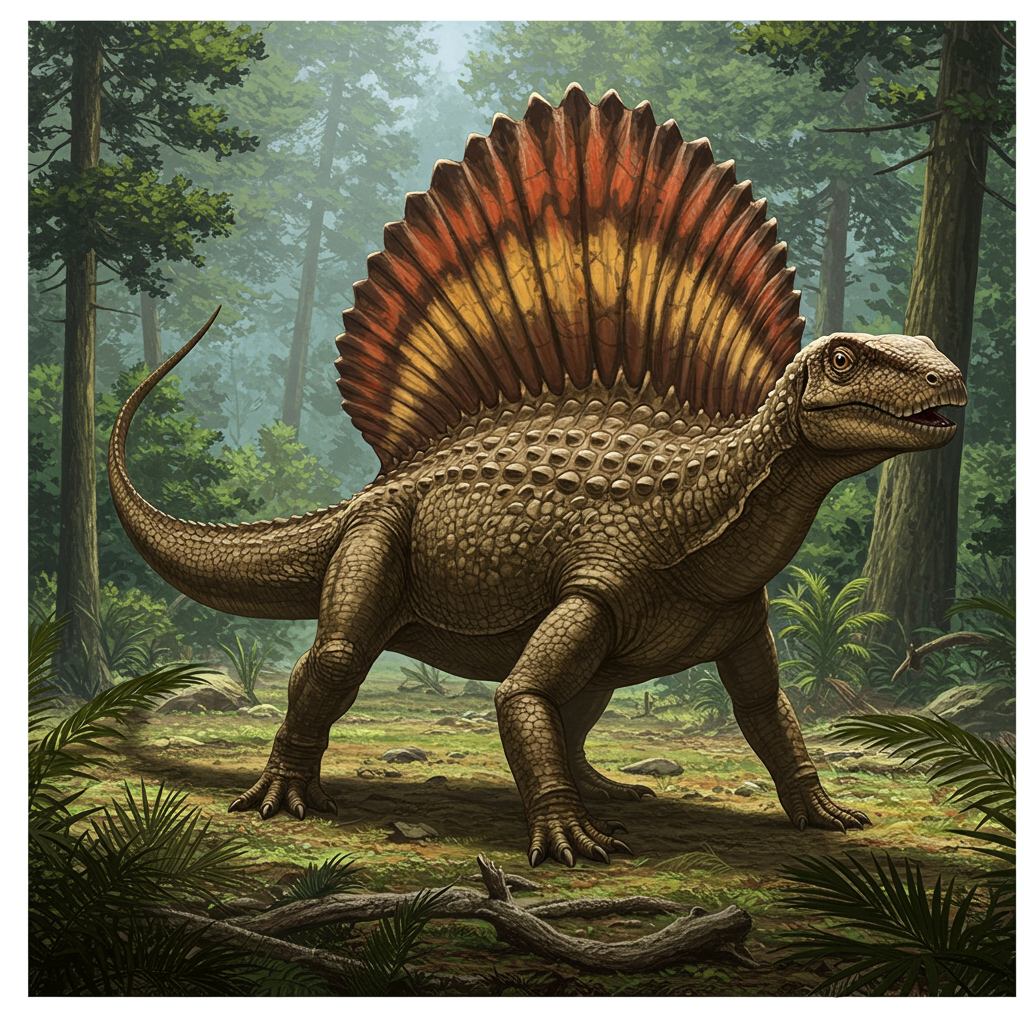Paleontology constantly uncovers astonishing secrets from our planet’s distant past. One such revelation emerges from the Triassic period, roughly 247 million years ago. Scientists have unveiled a remarkable discovery about Mirasaura grauvogeli, an ancient reptile. This creature sported an unexpected feature: a unique, fan-like structure on its back. This new analysis challenges previous assumptions. It suggests this appendage was not a feather, but a distinctive form of skin. Researchers propose it was likely used for communication. This finding highlights the incredible evolutionary diversity of ancient life. It also underscores the power of modern scientific methods.
Unearthing the Mirasaura Mystery
For decades, paleontologists have worked to understand life forms from millions of years ago. Recent technological advancements have revolutionized this field. Scientists can now analyze even the softest materials in fossils. This includes skin, feathers, and scales. Such detailed examination leads to surprising insights. It reveals that some extinct animals were far more unusual than previously imagined.
A groundbreaking paper, recently published in Nature, details one such re-analysis. It focuses on a fossilized Mirasaura grauvogeli. This ancient reptile lived during the Triassic era. Its most defining characteristic appeared to be a feather-like growth on its back. However, the new study presents a different conclusion.
The Fan-Like Revelation
The popular perception held that Mirasaura‘s dorsal appendage was a feather. The new research contradicts this belief. Instead, the study’s authors propose it was a specialized type of skin. This skin extended outwards, forming a fan-like display. More investigation is still needed. Yet, the researchers believe this fan served a crucial purpose. It likely functioned as a communication tool among these creatures. This could have involved visual signals.
Beyond Feathers and Scales
Further detailed analysis provided more clues. The unique structures preserved melanosomes. These are pigment-carrying particles. Intriguingly, these melanosomes resembled those found in birds more than typical reptiles. Despite this, the appendage itself was neither a feather nor a scale. The researchers described its texture as “distinctly corrugated.” This means it had a series of parallel folds, much like cardboard. They also suggested it was flexible and malleable to some extent.
Richard Prum, an evolutionary biologist from Yale University, commented on this finding. He was not directly involved in the new research. Prum noted that this evidence reveals unexpected evolutionary paths. He stated, “vertebrate skin has evolutionary possibilities that are weirder than might be easily imagined.” He emphasized that a feather is merely one of many incredible structures that reptiles evolved from their skin. This discovery expands our understanding of reptilian adaptability.
Revisiting an Ancient Enigma
The Mirasaura fossil itself has a long history. It was first discovered way back in 1939. However, it was only acquired by Stuttgart’s State Museum of Natural History in Germany in 2019. For many years, researchers were unsure what the fossil represented. The team behind this new study performed the initial identification of the creature. This underscores the importance of re-examining existing collections with fresh eyes and modern tools.
This re-analysis also shed light on Mirasaura‘s close relative. This was Longisquama insignis. Longisquama also featured long, feather-like structures on its back. Previous scientists struggled to understand it fully. This was partly due to the poor preservation of the Longisquama fossil. For their new work, the Stuttgart team reconstructed the skeletal anatomy of both creatures. Their findings suggest a strong evolutionary link.
The Drepanosaur Connection
The paleontologists found it highly probable that both Mirasaura and Longisquama belonged to the drepanosaur family. This was a peculiar group of reptiles. They roamed the Earth during the Triassic era. This period spanned from approximately 252 million to 201 million years ago. Drepanosaurs are sometimes playfully called “monkey lizards.”
These drepanosaurs truly were an odd bunch. They possessed long, bird-like skulls. Their bodies resembled those of chameleons. Their unique anatomy strongly suggests they were arboreal. This means they lived primarily in trees. If the new research is confirmed, it implies that many drepanosaurs may have possessed elaborate structures. These helical appendages would have extended from their backs. Both Mirasaura and Longisquama seem to fit this pattern.
Broader Implications for Paleontology
The Mirasaura discovery serves as a powerful reminder. Even old, well-known fossils can hold new secrets. Modern paleontological techniques allow scientists to probe deeper than ever before. They can uncover details previously invisible. This process often leads to significant re-evaluations. It challenges long-held scientific theories. For instance, recent studies using advanced imaging have also revised our understanding of spider origins. New evidence suggests an oceanic ancestry for arachnids, contrary to prior beliefs. These examples highlight a common theme in paleontology: re-analysis can revolutionize our understanding of ancient life.
When studying the past, paleontologists use the best available evidence. They combine careful judgment with sophisticated methods. This allows them to infer physical features of extinct creatures. The Mirasaura finding is particularly striking. It reveals a reptilian version of a biological transformer. Such “rediscoveries” provide incredible insights. They deepen our appreciation for the diverse evolutionary paths of life on Earth. These ongoing revelations are a testament to scientific progress. They consistently show us how much more there is to learn. Every new fossil, or re-examined old one, brings us closer to understanding our planet’s incredible history.
Frequently Asked Questions
What was the primary finding about Mirasaura grauvogeli‘s back structure?
The key discovery about Mirasaura grauvogeli is that its prominent back structure, previously thought to be a feather, was actually a unique, fan-like type of skin. This corrugated and possibly malleable appendage is now believed to have functioned as a visual communication tool among these ancient reptiles, rather than for flight or display in the way feathers might.
Which institution conducted the re-analysis of the Mirasaura fossil?
The re-analysis of the Mirasaura grauvogeli fossil was conducted by a team of paleontologists at Stuttgart’s State Museum of Natural History in Germany. The fossil was originally discovered in 1939 and acquired by the museum in 2019, allowing researchers to apply modern analytical techniques to an old specimen, leading to its groundbreaking identification and interpretation.
How does the Mirasaura discovery impact our understanding of ancient reptile evolution?
The Mirasaura discovery significantly broadens our understanding of ancient reptile evolution by demonstrating unexpected possibilities for skin development. It shows that vertebrate skin could evolve highly specialized, non-feather, non-scale structures for purposes like communication. This finding challenges conventional views and emphasizes the remarkable diversity and adaptability within the drepanosaur family, suggesting a wider array of elaborate displays among these “monkey lizards” than previously recognized.
Conclusion
The re-evaluation of Mirasaura grauvogeli truly reshapes our view of Triassic reptiles. What was once considered a primitive feather is now understood as an advanced skin-based display. This illustrates nature’s endless capacity for innovation. It also showcases the vital role of modern paleontology. Scientists continue to uncover new facets of ancient life. These revelations come from applying new techniques to old discoveries. The Mirasaura‘s unique fan offers a window into the communication strategies of a long-extinct world. It reminds us that our understanding of Earth’s biological history is constantly evolving.




